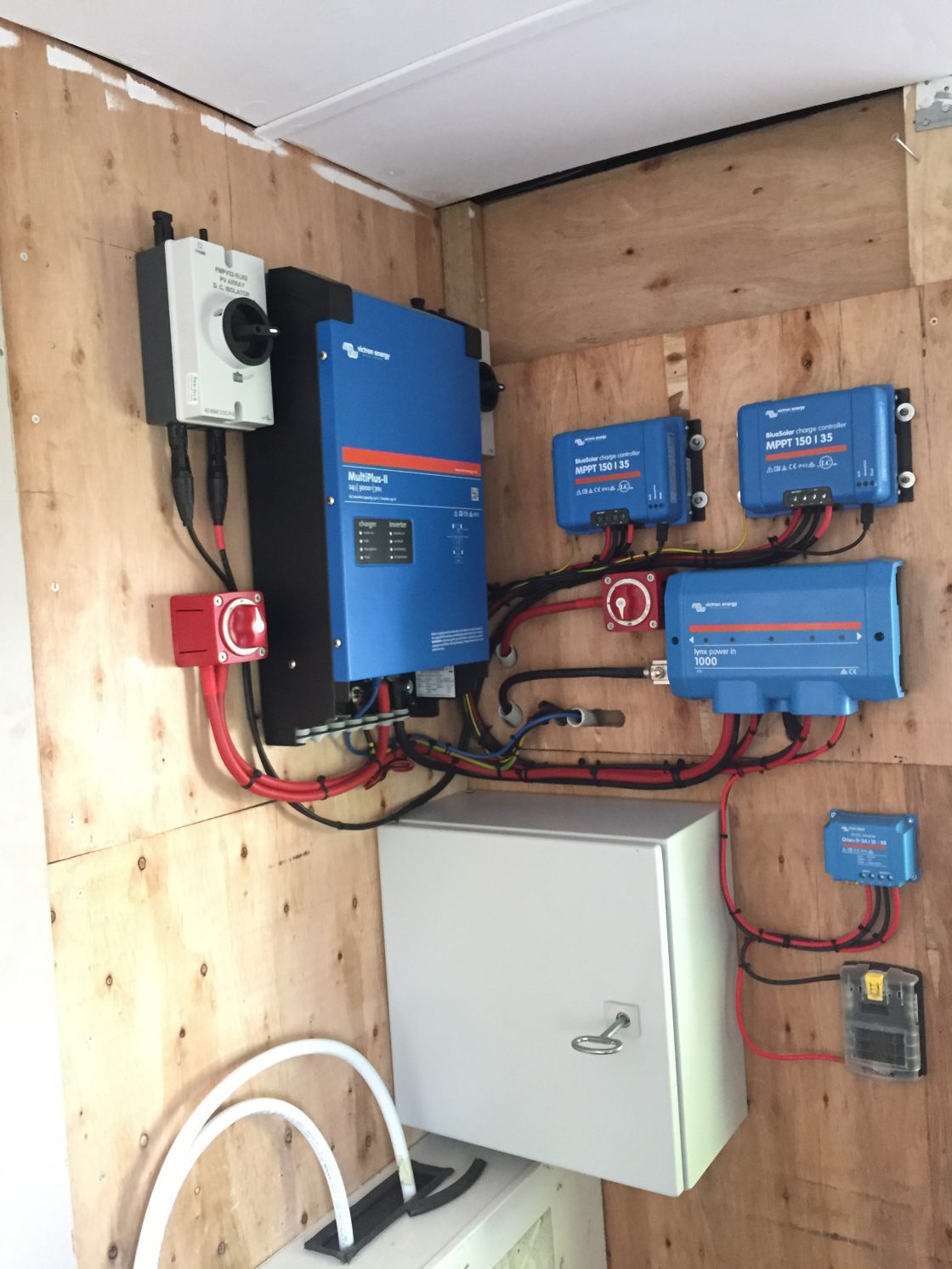One of the first and most relevant steps in planning the PV system was to create an annual profile of our supposed electricity consumption. To do this, we noted the nominal power (watts) and the respective duty cycle of our consumers over the course of the day, taking into account the different seasons. If we then multiply the number of consumers by power and operating time, we get the energy consumption in watt-hours.
For example: 4 energy-saving lamps consume 10 watts each and are in operation for 5 hours a day.
4x10x5= 200 Watt hours
After determining our approximate power needs, we still had to figure out the maximum load for the right choice of batteries and inverter. How many watts do we consume when almost all devices are switched on at the same time?
Due to the fact that we heat our water with the water-bearing wood stove in the winter and only turn on the electric heater in the boiler in the summer when there is enough power available, our power consumption is relatively low. Also the maximum load will not be too high, because we have mainly battery devices.
Nevertheless, our bus will rarely make the acquaintance of a shore power connection, as our destinations tend to be remote locations far from campgrounds. Accordingly, our power supply must function completely self-sufficiently in every situation.
The winter, or bad weather, when the sun refuses to come for a few days, can not really be avoided. To be prepared for this eventuality, we need to store the necessary energy. For this we have installed two Victron Energy 12V 220Ah Deep CycleGel batteries. These batteries are durable, powerful, and do not outgas. A lithium battery would of course have been lighter and could have been discharged deeper, but the ease of flammability, destructive degradation and lack of recycling methods, put us off.
On our roof there are 6 solar modules with 240 watts each. These are divided into two strings in order to still generate energy even if the roof is partially shaded. The generated energy is managed by 2 solar charge controllersand fed into the batteries.

The two 12-volt batteries are connected in series to create a 24-volt electrical system. A voltage of 24 volts results in a thinner cable cross-section in the DC area than with a 12 volt network, which in turn saves space and money.
But since we want to have an electrical system in our bus like in the house, to be able to use normal lamps, sockets and other devices, we need an inverter that converts the direct current into alternating current (or transforms the voltage from 24 to 220 volts).



Now the electrical installation must be appropriately fused. If a short circuit occurs, only the fuse blows and not the cable.
In the case of a 220 volt network, personal protection is also required. The RCD has the task of switching off an electrical consumer within 0.2 s if it has a fault and a touch voltage that is dangerous for persons occurs.
A professional electrical installation and the associated protection, is very important to us, because in case of doubt it can be about our lives. Therefore, we have discussed this project piece by piece with a specialist from the company “Green Akku”and had it approved by an electrician before use.

